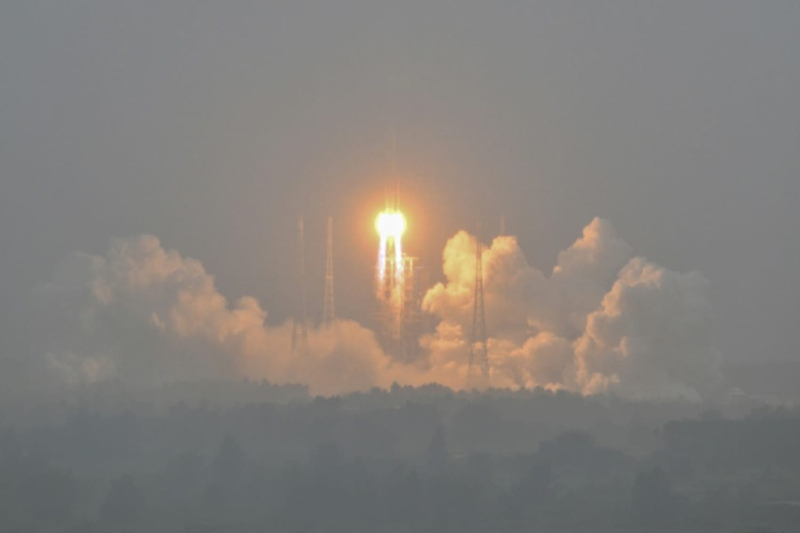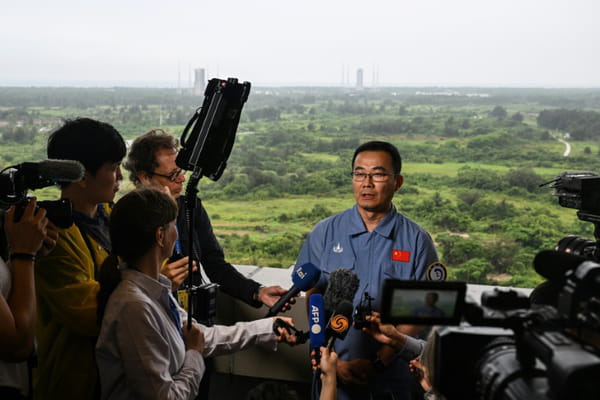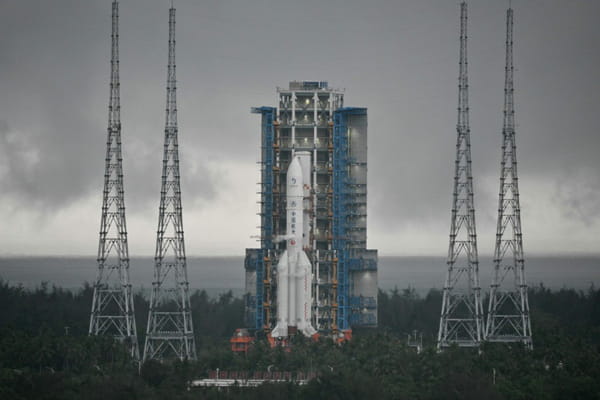China has launched Friday a probe to collect samples from the far side of the Moon, a world first, which would be a step forward for the country's ambitious program. A rocket carrying the Chang'e 6 probe took off from the Wenchang Space Launch Center, on the tropical island of Hainan (south), shortly before 5:30 p.m. (09:30 GMT), journalists from AFP near the site. Hundreds of spectators gathered nearby to witness the latest advance in China's space program. The state agency New China hailed the launch as “the first undertaking of this type in the history of human exploration of the Moon.” ” The whole mission has many challenges, each step is interrelated and nerve-wracking,” Wang Qiong, deputy chief designer of the Chang'e 6 mission, told Xinhua. This is China's latest project, which Washington says is disguising a military space program under the guise of a civilian program. The Chang'e 6 mission aims to collect approximately two kilos of lunar samples from the far side of the Moon and bring them back to Earth for analysis. This is a technically complex mission, lasting 53 days, which consists in particular of launching a probe on this hemisphere of the Moon which turns the with your back permanently to the Earth. Ge Ping, vice director of the China Lunar Exploration and Space Engineering Center, makes a statement to the press at the Wenchang Space Launch Center, May 2, 2024 in south China © AFP – Hector RETAMAL “Chang'e 6 will collect samples from the far side of the Moon for the first time,” Ge Ping, vice director of the China Center for Lunar Exploration and Space Engineering, told reporters. In 2019, China had already placed a device on the far side of the Moon but it had not brought back any samples. The probe is to land in the immense South Pole-Aitken basin, one of the largest known impact craters in the solar system. Once there, she will collect lunar soil and rocks and conduct experiments in the area where she lands. Her mission completed, she must return to Earth and land at the Wenchang Space Launch Center. A Long March 5 rocket, carrying the Chang'e-6 lunar probe, on its launch pad at the Wenchang Space Launch Center in south China's Hainan province, May 3, 2024 © AFP – HECTOR RETAMAL President Xi Jinping has given a boost to China's “space dream”. The world's second largest economy has injected billions of dollars into its military space program in order to catch up with the United States and Russia. Beijing has already recorded several successes, notably the construction of the Tiangong (“Heavenly Palace”) space station where a new crew of three astronauts were sent last week. – “Great importance for humanity” – China also landed a rover (a small motorized “rover”) on Mars and it is the third country in the world to have sent a human into space by its own means. The United States plan to land astronauts on the Moon in 2026 with their Artemis 3 mission. China also plans to send humans there by 2030. China is excluded from the International Space Station since 2011, when the United States banned NASA from collaborating with Beijing. China then developed its own space station project. The rapid progress of the Chinese space program is causing concern in Washington. In April, Bill Nelson, the head of NASA, affirmed that the United States was now engaged in a “race” with Beijing. Bill Nelson, the head of NASA, September 14, 2023 in Washington © AFP – ANDREW CABALLERO-REYNOLDS “We believe that a lot of what they call their civilian space program is actually a military program,” he told a House spending committee. representatives, in Washington. Chang'e 6 is the first of three unmanned missions sent to the Moon planned by China for this decade. Then, Chang'e 7 will explore the lunar south pole in search of water, while Chang'e 8 will attempt to establish the technical feasibility of building 'a base on Earth's natural satellite, with Beijing saying a “basic model” will be completed by 2030. According to scientists, the face hidden from the Moon – so called because it is invisible from Earth and not because it never captures the sun's rays – is very promising for research, because its craters are less covered by ancient lava flows than those on the near side. So this could mean it will be easier to collect materials to better understand how the Moon formed. “The samples collected by Chang'e 6 will have a geological age of around 4 billion years,” Ge estimated. “Collecting lunar samples from different regions and different geological ages and carrying out experiments is of great value and importance to humanity,” he added. All rights of reproduction and representation reserved. © (2024) Agence France-Presse




